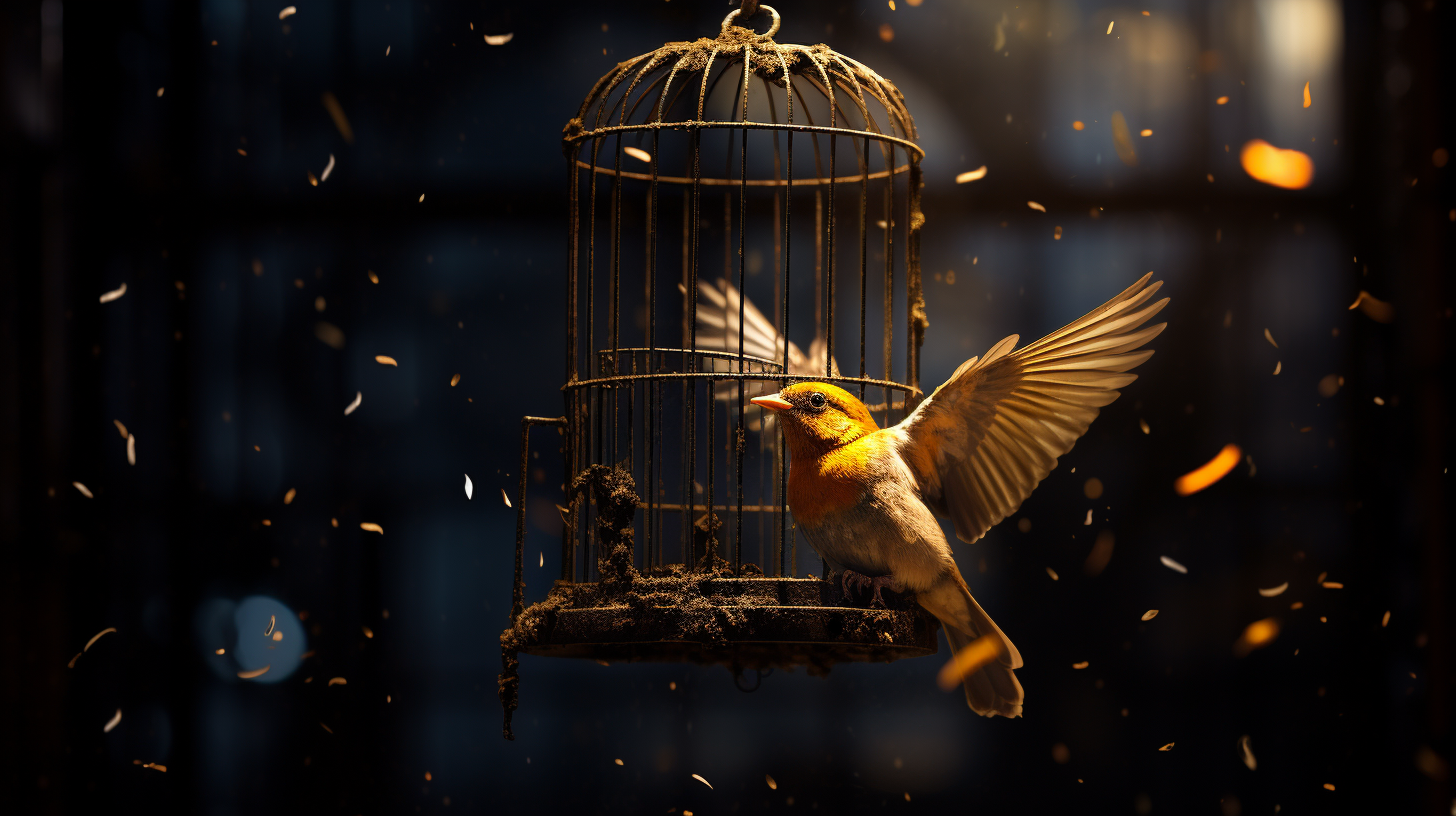In an age drowned by the cacophony of climate chaos, a different silence is haunting the skies – the quieting of the avian world. The recent article ‘Winged Warnings – The Silent Spring of Avian Decline’ resonated with our grim new reality, evoking Rachel Carson’s echoes and painting a bleak picture of a nature’s symphony waning into whispers. Today, we delve further into this chilling silence, exploring a phenomenon some are calling ‘the end of avian imprisonment.’
It’s a paradoxical victory, isn’t it? For countless years, humans have caged birds, entranced by the very songs we’ve unwittingly stilled. And now, as these feathered poets face the dark night of extinction, their cages are being left vacant. The irony is stark and brutal: without the freedom to thrive in their natural niches, the final song of the caged bird is upon us.
Our urbanscapes, once vibrant with the trills and chirps of winged dwellers, have become their sarcophagi. Skyscrapers stand as totems to their absence. Yet, even as some avian species have adapted to this fabricated jungle, their adaptations come at a harsh cost – survival now means muted colours, stifled songs, and shadowy existences.
Researchers decry this ‘last song’ moment with a torrent of grim data: numbers plummeting, habitats dwindling, and human apathy soaring. Some studies point to a stark drop in migratory patterns, others to the hollowing out of ecological niches. But all agree on one thing – the situation is dire.
To some, hope is a feathered thing. Yet, in this dystopian reality, hope has been plucked from the wing. Conservation efforts run ragged, tripping over the red tape of bureaucracy and the black ink of industrial agendas. Our future – a barren one, devoid not only of birdsong but of the inherent value that biodiversity brings.
But despair not, dear reader, for in the face of this quietus, there lies a morbid fascination. It’s a grotesque theatre of the environment à la mode – a spectacle of silence wearing nature’s desolation like a somber shroud. Picture the great parks, once awash with chirps and hoots, now echoing with the ghostly whispers of absent friends.
Invisibly, birdcages rust in the corners of our consciousness, a macabre symbol of the freedom that might’ve been. Their doors swing open, not to release life back into the wild, but to close the chapter on earth’s aviaries. We can’t help but ponder, what purpose do these empty cages serve? Perhaps, as monuments – to folly, to loss, to a song that once soared high and is now grounded forever.
As we stand witness to this environmental elegiac, there is a dare within the despair. To listen to the dwindling cadence of the caged bird’s last song is to be compelled. Compelled to notice, to care, to act before the requiem becomes an irrevocable silence.
The article’s title, ‘Last Song for the Caged Bird,’ is perhaps a misnomer, for it suggests an end. But every end is a place from which to start again. This song, morose and fading though it may be, may yet stir souls to song themselves – a rallying cry for those who can still hear to sing out for those who can no longer. This is the song we must learn, the new anthem for an age that needs not caged birds, but resilient wings of change.
